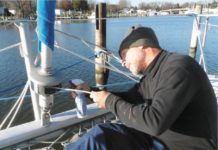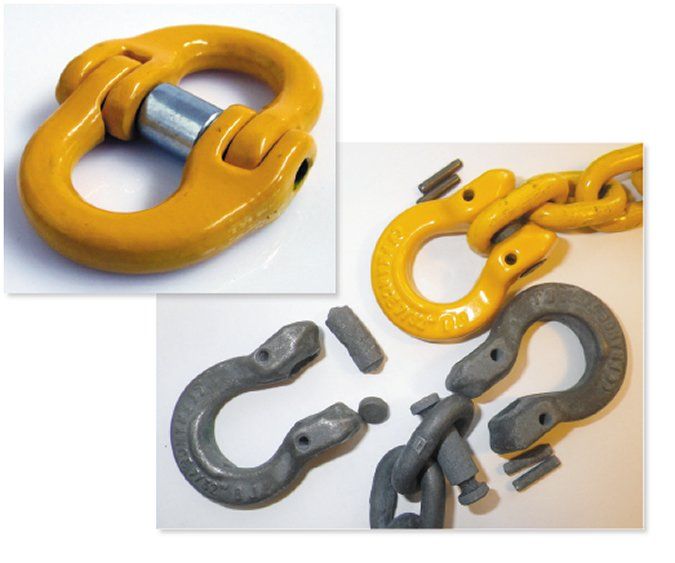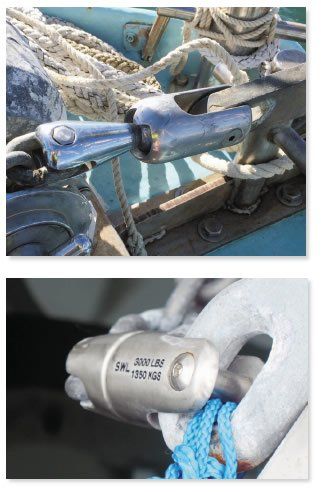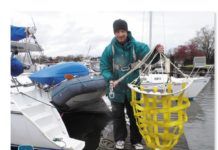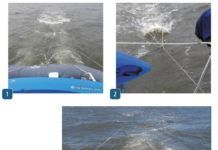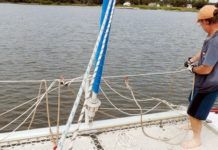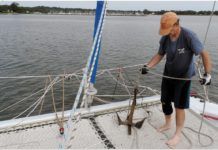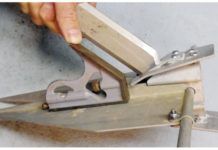An Inquiry into Anchor Angles
Designers of boat anchors deal in a handful of variables. The holding capacity of an anchor derives from its fluke, particularly the flukes size, shape, and the angle it makes with the shank. Other parts of the anchor-shank, roll bar, and stock-allow the fluke to set and hold as the designer intended. Based on the shapes and relationships between these components, an anchor fits into one of several broad categories: fluke (Danforth, Fortress, Manson Racer), plow (CQR, Delta, Kobra, SARCA Excel), claw (Bruce, Lewmar Claw, Manson Ray, Super Max), or fisherman (Luke).
In Search of the Ultimate Boat Hook
The basic design of the humble boat hook hasn't changed much over the years, but it has seen upgrades in construction and materials, along with some minor design tweaks. For this report, we set out to determine what constitutes the ideal boat hook. We evaluated boat hooks currently on the market and took a look at some old models still in service.
Keeping Ice at Bay
Southern sailors often put their boats away for a few months when the water gets a little cool. Northern sailors have a more definitive reason; they put their boats away when the water gets hard. Often, freezing is limited to harbor areas, where shallow water, freshwater input, and limited tidal flushing encourage ice formation. Far north, you can walk on it for weeks, while in the mid-Atlantic, the layer is often thin and transitory. And while a few inches of ice are generally harmless to a sound boat, thick moving ice can damage paint, exposed steering gear, and planking. Although we can't make the weather any warmer, there are measures boat owners can take to keep ice at bay.
Installation Tips for Deicers
When it comes to deicers, proper installation is key. Here are some tips to ensure your setup will optimize ice removal.
Anchor Shackles Round II
In this report, we continue our investigation into shackles, re-testing one shackle that fell below the makers specifications, Canada Metal Pacifics black-pin Titan shackle, and testing for the first time a widely used shackle from West Marine. We also offer our initial findings on two stainless-steel shackles: the Tecni-lift 316 bow shackle and a no-name stainless-steel shackle marked Hong Kong, which is representative of the many generic stainless shackles youll find in hardware stores and some chandleries.
How Much Drag is in a Drogue?
Weve long been interested in drogues, devices specifically designed to be towed behind a boat to reduce speed and to produce directional stability in heavy weather. Our last major drogue test was in 2009, when noted marine writers and circumnavigators Evans Starzinger and Beth Leonard shared their storm tactics (see Heavy Weather Sailing Tactics". Another relevant article, Sea Anchors and Drogues, compared a variety of drag devices. If you are interested in purchasing a drogue, we recommend reading the archive articles along with this report.
Field Testing Drag, Behavior
We did not test every drogue that appears in the accompanying table, PS Value Guide: Drogues. However, we collected a huge amount of test data and observations from model testing and from multiple sources, including Victor Shanes Drag Device Database (www.dragdevicedb.com), and incorporated these into our test findings.
Doubling Up: Full-size Tandem Anchoring
When youve tested anchors as long as Practical Sailor has, you feel pressed to explore unconventional arrangements that others advocate-particularly if the advocates include experienced sailors and a major anchor manufacturer. Such is the case with the tandem anchor setup, in which two anchors are connected to a single rode leading to the boat. The anchoring system is widely discussed on online sites catering to cruisers and is endorsed by at least one manufacturer, Rocna, which has encouraged tandem anchoring with the placement of a special hole at the base of the Rocna shank for shackling on a second rode and anchor.
Tandem Anchoring
Recent tests on a miserable holding bottom in the Chesapeake Bay (see PS, February 2015 online) showed that conventionally sized anchors just don't hold in a soupy bottom. Those that can-pivoting fluke anchors-arent always the easiest to set, and security during wind shifts is much debated. Setting a second anchor is an option-one weve studied previously (see Tropical Storm Dos and Donts, PS November 2011 online)-but tandem rigs intrigued us. Could two anchors on a single rode provide more secure holding in tricky bottoms, and if so, what is the ideal arrangement? We were particularly interested in single-line tandem rigs (which Rocna designer Peter Smith referred to in his report) and V-tandem rigs (which several PS contributors have had success with).
Small Versus Large Anchors
The consensus among anchor makers (Fortress, Bruce, Manson, Mantus) is that holding power in soft bottoms increases in approximate proportion with anchor mass; exponents range from 0.92 to 1.0. While there are differences between models and manufacturers, a 35-pound Mantus should hold roughly 18 times more than a 2-pound Mantus, and a Fortress FX-16 should hold four times more than a Guardian G5.



















